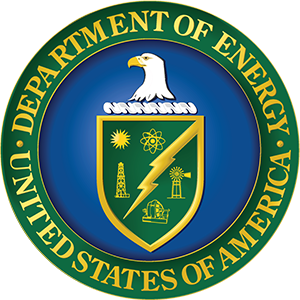This Energy Exchange recorded session* presents available technologies and benefits for implementing advanced energy storage solutions. New technologies are coming on the market and old technologies are being dusted off and updated. These advances make energy storage an economical and viable option for facility and campus energy. Panelists will show how building automation technology can facilitate seamless integration of energy storage into building facility power systems.
Instructors
Andy Walker, Principal Engineer, National Renewable Energy Laboratory Read Bio
Andy Walker is a principal engineer at the National Renewable Energy Laboratory, where he conducts engineering and economic analysis of energy efficiency and renewable energy projects for federal agencies such as national parks and military bases and also for commercial and industrial clients. His patent on the renewable energy optimization method of planning renewable energy projects across a portfolio of properties based on economic value was awarded the Thomas A. Edison Patent Award in 2015 based on innovation and impact.
He teaches at the University of Colorado at Boulder, Colorado School of Mines, and at Metropolitan State University of Denver. He has led the Solar Energy Division of the American Society of Mechanical Engineers and is an ASME Fellow. Andy is the author of more than 28 book chapters, journal articles, and conference papers including “Integration of Renewable Energy Systems” by ASME Press and “Solar Energy: Technologies and Project Delivery for Buildings,” published by John Wiley and Sons. His credentials include a B.S., M.S., and Ph.D. in mechanical engineering from Colorado State University, and he is a registered Professional Engineer in the State of Colorado.
Travis Starns, AECOM Read Bio
Travis has worked within the power industry for more than 15 years with a strong focus on developing air pollution control technologies for coal-fired power plants, increasing performance for existing plant capital equipment, and most recently technology development and integration for energy storage technologies. Since joining AECOM, Travis has focused on diversifying AECOM’s technology services and identifying grid-scale energy storage technologies that support clean energy development and provide operational flexibility for electricity generating and delivery clients. As part of this effort, he has led the techno-economic analysis for various grid-scale energy storage technologies such as electrochemistry (e.g., Lithium-ion, vanadium redox), compressed air energy storage, and liquid air energy storage. Travis leads business development efforts for an Advanced-Compressed Air Energy Storage (A-CAES) technology and has participated in several energy storage initiatives that leverage AECOM’s capabilities and experience.
Robert J. Turk, Senior Systems Engineer, Idaho National Laboratory Read Bio
Robert possesses more than 30 years of experience at Idaho National Laboratory. He is internationally recognized as a subject matter expert in renewable energy systems and provides assistance to the U.S. Department of Defense, the U.S. Department of Energy, and corporate and private industry. He has provided a technical systematic approach to manage and direct $150 million in annual investments in renewable energy and conservation projects as well as provided assistance and guidance for energy projects on military bases internationally. He holds a master’s degree in systems engineering from the University of Idaho and a bachelor’s degree in civil engineering from Montana State University.
Tyler Givens, Senior Energy Engineer, ABM Industries, Inc. Read Bio
For the past 10 years, he has developed and engineered energy savings performance contract (ESPC) projects for the various branches of the federal government and military domestically and abroad. He is experienced in analysis and development of a wide variety of energy conservation measures including lighting, HVAC and controls, envelope, and power generation. Tyler is a licensed professional engineer in the state of Tennessee, as well as a CEM and CMVP.
Learning Objectives
Upon completion of this course, attendees will understand:
- The wide portfolio of storage technologies for a broad spectrum of applications;
- Specific storage technologies within depth analysis; and
- How to apply lessons learned from recent case studies and applications of a couple innovative technologies at a several different types of facilities and location.
*The session featured in this on-demand course was recorded on August 22, 2018, at the 2018 Energy Exchange held in Cleveland, Ohio (Track 9, Session 6).










